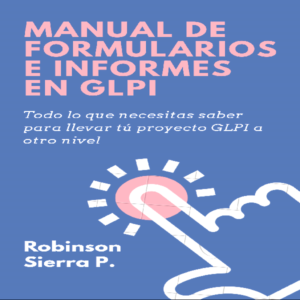Discover the secrets to writing best selling crime, mystery, suspense and thriller fiction from a multi-published crime author, and get started on writing your first whodunit or improve your existing manuscript..
So, what’s inside this short, practical, how-to guide to crafting mystery and thriller fiction?
Here’s your FIRST CLUE: Maureen Jennings, author of the best-selling Murdoch Mysteries, says mystery thriller author Nicola Furlong “…has written a fun, engaging 'how to’ book about writing mysteries. She is witty, thorough and she certainly knows what she's talking about."
Look, there’s more…a SECOND CLUE: Nicola Furlong has written “… a snappy guide that effectively covers the bases for the beginning mystery writer. You'll pick up useful insights into plot, character, point of view, suspense and so much more. The many tips should also help you find your unique style. If anything will kick start your first foray into crime writing, this great little resource will. I sure wish it had been around when I waded blindly into writing.” (Mary Jane Maffini - author of three crime fiction series)
This e-book offers simple tricks and techniques to writing murder mysteries and thrillers, supported by concrete examples, which you can apply immediately to your fiction writing. Romantic suspense? Psychological or espionage thriller? Mystery romance? Whatever you are writing, your first clue should be YOUDUNIT WHODUNIT!
YOUDUNIT WHODUNIT! HOW TO WRITE MYSTERIES covers specific suspense, thriller and mystery writing essentials, such as:
STRUCTURE:
•Key Elements of a Three-Act Tragedy
•Beginnings with a Bang
•Nailing Endings
CHARACTER:
•Picking Points of View
•Concocting Major, Secondary and Minor Characters
•Dialogue Ditties
STORY:
•To Plot or Not to Plot
•@#% Ideas
•Kicking up Suspense
•Clues and Red Herrings
EXCERPTS:
STRUCTURE: Chapter 2: Hit ‘Em Early, Hit ‘Em Hard
Hook and shock your audience by rocketing straight to the main crime or another crime so something important is happening, has just happened or will just happen. Set up the central plot problem (e.g., kidnapping or murder) or a major plot problem (like a stolen artefact or a missing person). This forces your villain forward; there's no turning back.
CLUES: Chapter 18: Is That A Clue Or Are You Just Happy To See Me?
Clues are the traces of guilt left behind by culprit. A good clue will eventually point in the right direction but initially seems to point in the wrong direction, or it means something different than expected, or it points nowhere.
Earl Stanley Gardner described clues as sequences; in other words, he suggested that a clue is a succession or series of related events. The succession of related events may occur close together or many pages or chapters apart.
For example, we know that a cold beer creates beads of moisture on its glass container. Now, if our suspect states that he finished his lager a couple of hours ago and our dazzling detective spots beads on the glass, guess what? The detective knows the suspect is lying.
It's dead easy…so read on dear Watson. The game's afoot!
So, what’s inside this short, practical, how-to guide to crafting mystery and thriller fiction?
Here’s your FIRST CLUE: Maureen Jennings, author of the best-selling Murdoch Mysteries, says mystery thriller author Nicola Furlong “…has written a fun, engaging 'how to’ book about writing mysteries. She is witty, thorough and she certainly knows what she's talking about."
Look, there’s more…a SECOND CLUE: Nicola Furlong has written “… a snappy guide that effectively covers the bases for the beginning mystery writer. You'll pick up useful insights into plot, character, point of view, suspense and so much more. The many tips should also help you find your unique style. If anything will kick start your first foray into crime writing, this great little resource will. I sure wish it had been around when I waded blindly into writing.” (Mary Jane Maffini - author of three crime fiction series)
This e-book offers simple tricks and techniques to writing murder mysteries and thrillers, supported by concrete examples, which you can apply immediately to your fiction writing. Romantic suspense? Psychological or espionage thriller? Mystery romance? Whatever you are writing, your first clue should be YOUDUNIT WHODUNIT!
YOUDUNIT WHODUNIT! HOW TO WRITE MYSTERIES covers specific suspense, thriller and mystery writing essentials, such as:
STRUCTURE:
•Key Elements of a Three-Act Tragedy
•Beginnings with a Bang
•Nailing Endings
CHARACTER:
•Picking Points of View
•Concocting Major, Secondary and Minor Characters
•Dialogue Ditties
STORY:
•To Plot or Not to Plot
•@#% Ideas
•Kicking up Suspense
•Clues and Red Herrings
EXCERPTS:
STRUCTURE: Chapter 2: Hit ‘Em Early, Hit ‘Em Hard
Hook and shock your audience by rocketing straight to the main crime or another crime so something important is happening, has just happened or will just happen. Set up the central plot problem (e.g., kidnapping or murder) or a major plot problem (like a stolen artefact or a missing person). This forces your villain forward; there's no turning back.
CLUES: Chapter 18: Is That A Clue Or Are You Just Happy To See Me?
Clues are the traces of guilt left behind by culprit. A good clue will eventually point in the right direction but initially seems to point in the wrong direction, or it means something different than expected, or it points nowhere.
Earl Stanley Gardner described clues as sequences; in other words, he suggested that a clue is a succession or series of related events. The succession of related events may occur close together or many pages or chapters apart.
For example, we know that a cold beer creates beads of moisture on its glass container. Now, if our suspect states that he finished his lager a couple of hours ago and our dazzling detective spots beads on the glass, guess what? The detective knows the suspect is lying.
It's dead easy…so read on dear Watson. The game's afoot!












